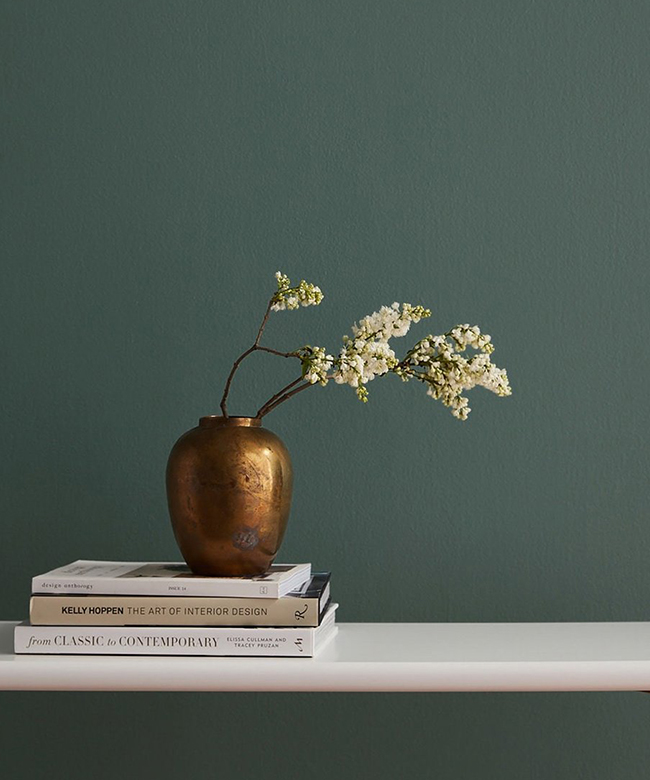





Home
How To Renovate A Home Sustainably: Cora’s Renovation Tips
Having recently purchased her first home, an old farmhouse where she grew up in Maine, our co-founder Cora has since been documenting her conscious renovation journey. Here she shares with us some of her top tips for sustainable renovation, expect to learn more about non-toxic paints, where to buy vintage furniture and eco-friendly energy options!
A word from Cora.
My husband and I recently purchased our first home – an old farmhouse where I grew up in Maine that we both hope to renovate with as much care and attention to our natural world and conscious curation as possible. We both felt a desire to start an organic garden, try to grow our own food, and to live in a more natural setting to offset our very digital existences and are so excited about this next chapter of our lives.
That being said, it has certainly been the biggest decision we’ve yet made and anyone who has bought a home can likely say it comes with quite a few considerations. For us, making our house as sustainable as possible has been our biggest concern to begin with and I wanted to share some things I’ve learned as we have navigated what it means to create a conscious home for us.
These are 10 things I’ve been thinking about a lot when it comes to how we can tread as lightly on this earth as possible whilst still creating what we hope to be a wonderful home. I hope these benefit any new home owners we have in the REV community! And also many of these can be applied to flat rentals as I’ve been doing that for over 15 years!).
Have patience.
Don’t buy everything at once. It’s so easy to think you need to simply fill a house with things to make it a home but I think that this is not only a huge misconception, but also a huge motivator of unsustainable consumption. Take your time and live in your space for a while before you shop….that way you know exactly what you want and it prevents you from buying something you may not love and need to replace within a couple of years or so. I always try and think will I love this piece for at least a decade about anything we purchase – most things thus far I know I will love for many decades and will repurpose within the house if we ever need to move them.
Buy antique pieces as much a possible.
Always try and check for vintage before you shop new! This for me has been a hugely fun and hugely time consuming process…I’ve been trolling antique shops and websites for months just to find one table but then when you find that item that you were looking for and it’s already in existence, made to last, and has a bit of history to it it’s just so rewarding. We grapple with selling new things all the time at REV so I have really tried to dedicate myself to finding as many older pieces as possible for our house to cut back on a demand for newness within the furniture market. Some of my favourites site for vintage include Vollective, Etsy, 1st Dibs, Vinterior.
Consider efficient heating and electricity ahead of other considerations.
It’s very easy to let design take precedence over the practical but how we heat and power our homes has a huge impact on the environment and as we head into another record breaking summer of temperatures here in the States, we need to be doing all we can to switch to sustainable energy sources. We decided to save our money to get solar panels, which will be the most expensive thing we do to kick things off.
We will also be getting a heat pump that will run off of the solar power, so we can heat and cool our home without oil. This in undoubtedly a luxury, but it was something my husband and I both saved up for knowing we needed to do it. If you can’t get your own solar, there are so many places to look for clean energy sources. In London, we used Bulb with is all renewable energy and you can check locally to see if you can switch providers. Also you can install a smart meter to help cut down on your energy use as a really simple, cheap solution here!
Insulate wisely.
As mentioned above, the way we heat our homes has a huge impact on the environment. The energy used to heat the spaces we live and work in is one of the highest contributors to our individual carbon footprints. Globally, heat accounts for nearly half of all energy consumption and 40% of energy-related carbon dioxide emissions (BBC). Good insulation can really help out here and we are even able to get super eco-friendly options that include cork, sheep’s wool and denim. Check out your local green options for insulation!
Eco friendly paints.
I have been educating myself on the health and environmental issues mourned toxicity of conventional house paints. Some of the ingredients we find in paints are just horrible. Benzene, for example, is an established carcinogen that turns up in some paints, particularly oil-based paints. As with other carcinogens, it’s likely people mostly have to worry about long-term or very high amounts of benzene exposure. But spending time in a poorly ventilated and newly painted room could expose people to elevated benzene levels, the ACS states, and this is just an example of a type of VOC that you find in paint.
VOCs can cause a number of short-term health problems, from headaches and dizziness to a runny nose and itchy eyes. Some VOCs may also cause nervous system and organ damage, according to the American Lung Association. Maternal exposure to some VOCs found in paint may raise the risk for low birth weight, which in turn is associated with an increased risk for delayed development or learning disabilities. Needless to say, it makes more sense to use VOC free paint in your home! My favourite eco friendly paints I’ve used are Clare (also a great way to support a black owned business!) and Kalikitir.
See our favourite places to buy eco paint here!
Captured above: Papyrus by @tthese_beautiful_thingss
Consider starting an organic garden.
If you have the space to, consider starting an organic garden and/or growing your own food. I have lived in Hackney in London for many years, and understand totally not having the space to do this but I always tried to at least grow my own herbs on a windowsill and I also always planted planters outside our window with some lavender for the local bees. A little can truly go a long way here!
Use natural materials whenever possible.
They will biodegrade if they ever did end up in landfill or are more easily able to be reused and recycled. I opted for some organic linen curtains for our windows that I had an independent woman in Greece make me (Etsy!) and reclaimed wood floors for a few of our rooms.
Try and source things as locally as possible.
I looked to local makers, builders and producers when it came to choosing things for our home that required construction and outside materials. We have tried extremely hard to source as much from within Maine as possible to keep carbon footprints low.
Organic cotton bedding and towels.
Investing in organic materials for the sheets you spend so many hours in is very important as it keeps you away from any pesticides you may have in there. My favourite finds are from Coyuchi, Parachute and Avocado but there are some great small brands selling organic cotton towels, just give it a quick Ecosia search.
Avoid big brands and try and shop small.
We looked to our local hardware store (not Home Depot!) and small brands for things like knobs, etc. Etsy was a great resource for finding the little knick knacks you might need that you can get from independents instead of big box stores.
Other things to consider.
LED lighting (these bulbs are much more efficient!).
Getting rid of old carpets (they can contain a lot of toxins you don’t want to have in your home).
A water filter (to avoid needing plastic water bottles).
Invest in a rain water catcher (or just use a bucket!) to store excess water for your garden.
Get a smaller washer and dryer as it will encourage you to do less laundry/air dry!
Make sure you have a compost bin and recycling bins to make waste management easy.


























